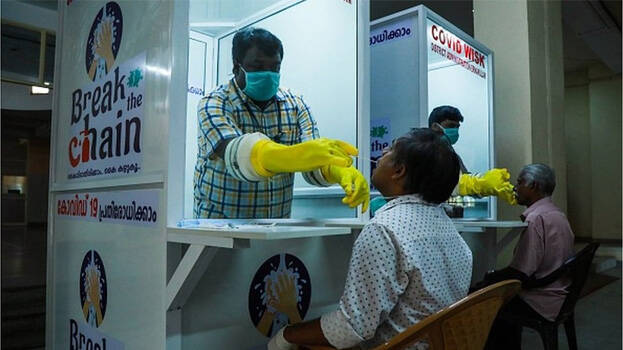

Hit badly with two floods and Covid, Kerala's financial days are more puzzling, giving no chance for definitions, let alone predictions. Even the present rulers agree that Kerala is not on firm financial grounds.
It was during consecutive floods which submerged Kerala in financial crisis that workers in the gulf having lost their jobs because of new work policies flowed into Kerala. With the onslaught of Covid it was not just that the future of the NRI was at stake, even their chances of returning to work was in question. The agriculture, production and construction sector came to a screeching halt. Those who were not financially independent could not make both ends meet any more. Disasters persisted to dilapidate the construction sector. It is now no news that the state has borrowed every penny they could.
Economic slump is not a meaningless word for Kerala, it is a hard hitting reality.
After foreign remittance, Kerala main source of income was tourism. Even it was first hit by floods and then visited by Corona which has since come to stay and that too with no good intent. A lion's share of Kerla tourism came from monsoon tourism. After 2017, it had been bad weather for this too. Ironically, a weak monsoon was the reason in the first phase of this crisis while a heavy monsoon was responsible for completing the ruin. As Covid opened its account in Kerala hundreds of hotels and restaurants were closed down. When the lock down hit transportation, there was no way tourists could favour Kerala as a tourist destination. Those who invested heavily in tourism are in heavy debt.
When repayment was frozen by moratorium, even banks are going bankrupt. The small scale business and industry sector isn't there anymore. As unemployment is on the rise, Malayalees have opted for a hand to mouth existence. As Kerala which was notorious as a consumer society loses its buying power, rigor mortis has started its grip on every walks of life for the Keralites.
In a financial year, Onam arrives in the first phase. Since the economic slump has affected the public and the state, the festival seasons give the market no reason to celebrate. The lock down clamped to curb the spread of Corona has further choked the transactions. The home appliances manufacturers always wait for the Onam season in Kerala to launch their new products. As financial depletion smothers Kerala, those who work in this sector are not finding enough bread on their table.
It is when Kerala gets out of the problems which surfaced in the flood that another flood struck. The Kerala government organised a fund using masala bonds, borrowed from the world bank and levied 1% percent flood cess. Nothing has been able to keep it afloat so far, let alone set sail.
In the previous flood alone Kerala suffered a loss of 1725 crores. The market has been so badly hit and is under such prolonged lock down that it is impossible to reckon the loss suffered by the businessmen.
Technically it has been figured out that Kerala suffered a loss of 3100 crores in the 2018 flood. But this does not include personal loss. Since personal loss has an emotional side to it, there is no way it can be properly reckoned.
The Farm Information Bureau states that 2, 36, 650 hectares of farm land has been ruined. A loss of 18, 54 cross also has been estimated.
10. 83 lakh farmers have been affected by the flood. As the state braces against this loss, Covid has struck shattering the dreams about any financial rescue.
In the last financial year, Kerala had a per capita debt of 90, 000. It is only increasing. Only stern economic measure and effective financial policies can save Keralites from this economic booby trap. For this a concerted effort using a survival kit has to be put in place.